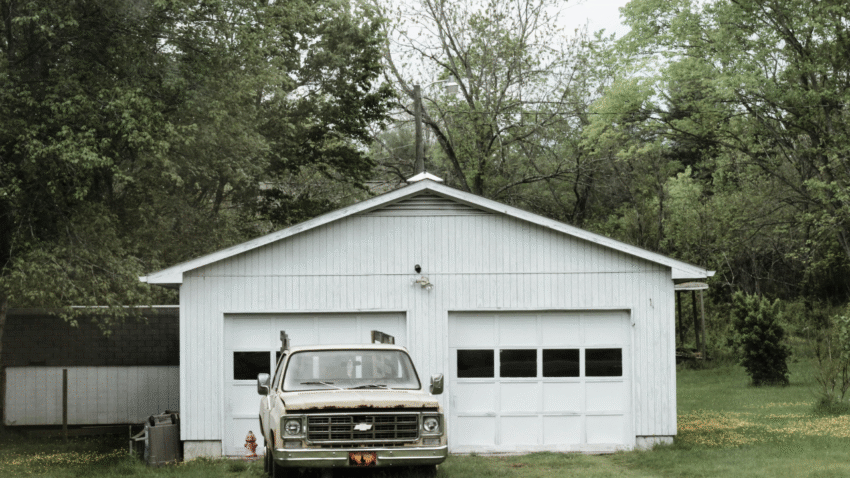Introduction
Baseboards aren’t just for living rooms and bedrooms—they can also add a clean, finished look to your garage. In addition to improving appearance, baseboards protect the lower portion of your walls from dirt, scuffs, and moisture. In this guide, you’ll learn how to install baseboards in the garage step-by-step, so you can give your workspace a polished look while boosting durability.
Why Installing Baseboards Matters for Your Garage
While garages are often treated as purely functional spaces, adding baseboards offers several benefits:
- Protects walls from impacts caused by tools, lawn equipment, and storage bins.
- Covers gaps between the floor and wall for a cleaner appearance.
- Prevents dirt and debris from collecting along the wall edges.
- Improves property value with a more finished and well-maintained garage.
- Adds moisture resistance if using durable materials.
Baseboards are a small upgrade that can make a big difference in both form and function.
Step-by-Step Guide to Installing Baseboards in the Garage
1. Choose the Right Material
Garage environments can be more humid, dusty, and prone to impact than indoor spaces, so pick a material that can withstand these conditions:
- PVC or Vinyl: Moisture-resistant, easy to clean, and impact-resistant.
- MDF (Medium Density Fiberboard): Affordable, paintable, but less moisture-resistant.
- Wood (Pine, Oak): Sturdy and classic but needs sealing for moisture protection.
- Rubber or Composite: Highly durable and great for heavy-use garages.
2. Gather Your Tools and Materials
Materials:
- Baseboard material of your choice
- Construction adhesive (optional for extra hold)
- Finish nails or screws
- Caulk (paintable for sealing gaps)
- Paint or stain (optional)
Tools:
- Tape measure
- Miter saw (or miter box with hand saw)
- Hammer or nail gun
- Drill (if using screws)
- Level
- Pencil
- Caulk gun
3. Prepare the Garage Walls and Floor
Before installation:
- Sweep and clean the floor edges.
- Remove any debris, old trim, or obstructions.
- If walls are unfinished or rough, sand or patch them so the baseboard sits flush.
4. Measure and Plan Your Cuts
Measure each wall section and mark where each baseboard piece will go. For corners, plan 45° miter cuts so the boards fit neatly together. Always measure twice and cut once to avoid waste.
5. Cut the Baseboards
Use a miter saw for clean, accurate cuts. For inside corners, cut the ends at 45° angles so they form a tight joint. For outside corners, cut the opposite 45° angle to wrap around the corner.
6. Dry-Fit the Baseboards
Before securing them, place each baseboard piece against the wall to check fit and alignment. This allows you to make adjustments before nailing or gluing.
7. Attach the Baseboards
You can install baseboards using nails, screws, or adhesive—or a combination:
Nail Gun or Hammer:
- Position the baseboard flush against the wall and floor.
- Drive nails into studs every 16 inches for a secure fit.
Screws:
- Best for heavier materials or uneven walls.
- Pre-drill holes to prevent splitting, then drive screws into studs.
Construction Adhesive:
- Apply to the back of the baseboard before nailing for extra strength.
8. Fill Gaps and Seams
After installation:
- Use caulk to fill any gaps between the baseboard and wall.
- Fill nail or screw holes with wood filler or spackle.
- Smooth with a damp cloth or putty knife.
9. Paint or Stain (Optional)
If you want a specific finish:
- Apply primer if painting raw wood or MDF.
- Paint with a durable, moisture-resistant paint.
- If staining, apply a protective polyurethane coating afterward.
10. Final Inspection
Check all baseboards for secure attachment and clean lines. Wipe away excess caulk and touch up any paint as needed.
Common Mistakes to Avoid
- Using Indoor-Only Materials
- Problem: MDF or untreated wood can warp in humid garages.
- Solution: Choose moisture-resistant materials like PVC or sealed wood.
- Skipping the Stud Finder
- Problem: Attaching only to drywall can cause the baseboard to loosen over time.
- Solution: Nail or screw into studs for a secure hold.
- Poor Corner Cuts
- Problem: Gaps in corners look unprofessional.
- Solution: Use a miter saw for precise angles and test fit before securing.
- Ignoring Floor Unevenness
- Problem: Gaps appear at the bottom edge if the floor isn’t level.
- Solution: Scribe and trim the baseboard to match the floor’s contour.
- Skipping Caulk
- Problem: Visible seams and gaps collect dirt and moisture.
- Solution: Always caulk for a finished, sealed appearance.
Extra Garage Tips & Hacks
- Add Kick Plates: For garages with heavy traffic, install a thin metal or rubber kick plate along the bottom for extra protection.
- Use Taller Baseboards: Gives the garage a more upscale, finished look.
- Install Before Epoxy Flooring: Makes sealing the floor-to-wall transition easier.
- Related Tip: See our guide on how to repaint garage shelving for a fresh look to complete your garage makeover.
Conclusion
Learning how to install baseboards in the garage is a simple project that delivers a big visual upgrade and practical protection. With the right materials, tools, and preparation, you can complete this improvement in a weekend and enjoy a cleaner, more polished garage for years to come.
Bookmark this guide to keep your garage looking sharp, organized, and well-maintained year-round.
